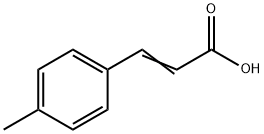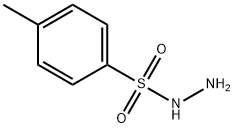4-Methylsulphonyl benzaldehyde
- CAS NO.:5398-77-6
- Empirical Formula: C8H8O3S
- Molecular Weight: 184.21
- MDL number: MFCD00216485
- EINECS: 674-175-2
- SAFETY DATA SHEET (SDS)
- Update Date: 2025-01-27 09:38:02

What is 4-Methylsulphonyl benzaldehyde?
Description
4-Methylsulfonyl benzaldehyde is an organic compound that can be synthesized by a number of different methods. It is soluble in water and has a melting point of about 212 degrees Celsius. It has been shown to have anti-cancer properties, as well as inhibitory effects on Cox-2 enzyme, which is involved in inflammation.
Chemical properties
light yellow-beige to light brown crystalline
The Uses of 4-Methylsulphonyl benzaldehyde
4-(Methylsulfonyl)benzaldehyde has been used in the preparation of arylidene-thiazolidinedione derivatives for the treatment of type 2 diabetes.
What are the applications of Application
4-Methylsulfonyl benzaldehyde has been used as a model for copper complexes, such as those found in wastewater treatment plants. It also shows promise for the removal of l-threonine from wastewater streams.
Properties of 4-Methylsulphonyl benzaldehyde
| Melting point: | 155-161 °C |
| Boiling point: | 288.16°C (rough estimate) |
| Density | 1.3761 (rough estimate) |
| refractive index | 1.5151 (estimate) |
| storage temp. | under inert gas (nitrogen or Argon) at 2-8°C |
| solubility | Chloroform, Methanol |
| form | Crystalline Powder or Crystals |
| color | Light yellow-beige to light brown |
| Stability: | Hygroscopic |
| CAS DataBase Reference | 5398-77-6(CAS DataBase Reference) |
Safety information for 4-Methylsulphonyl benzaldehyde
| Signal word | Warning |
| Pictogram(s) |
 Exclamation Mark Irritant GHS07 |
| GHS Hazard Statements |
H302:Acute toxicity,oral H315:Skin corrosion/irritation H319:Serious eye damage/eye irritation H335:Specific target organ toxicity, single exposure;Respiratory tract irritation |
| Precautionary Statement Codes |
P261:Avoid breathing dust/fume/gas/mist/vapours/spray. P264:Wash hands thoroughly after handling. P264:Wash skin thouroughly after handling. P270:Do not eat, drink or smoke when using this product. P301+P312:IF SWALLOWED: call a POISON CENTER or doctor/physician IF you feel unwell. P302+P352:IF ON SKIN: wash with plenty of soap and water. P305+P351+P338:IF IN EYES: Rinse cautiously with water for several minutes. Remove contact lenses, if present and easy to do. Continuerinsing. |
Computed Descriptors for 4-Methylsulphonyl benzaldehyde
New Products
3-Iodophenylacetic acid 3-Pyridineacetonitrile, α-hydroxy- 2-Propanamine, 1-chloro-, hydrochloride (9CI) 3-(hexyloxy)-4-(pyridin-3-yl)-1,2,5-thiadiazole 2-Hexyn-1-ol Dibenzo-18-crown-6 Nickel(II) perchlorate hexahydrate, 98% 4-Bromophenylacetonitrile, 95% 3-Bromo-4-fluoroaniline, 97% Sodium tetraborate decahydrate, 98% Palladium(II) acetate, trimer, Pd 99% 4-Bromo-2-chlorotoluene, 97% N N Dimethylformamide Dimethyl Acetal (Dmf Dma) 2,3-Dichloro Benzoyl Cyanide [Side Chain] Bis(2-Chloroethyl) Amine Hydrochloride L-Glutamic Acid Diethyl Ester Hydrochloride 5-(Difluoromethoxy)-2-Mercaptobenzimidazole 1-Ethyl-3-(3-Dimethylaminopropyl)-Carbodiimide Hydrochloride [EDC Hcl] 1,4-Napthoquinone Bromoiodomethane Sodium Bicarbonate Methylene Dichloride (MDC) Ethyl Acetate Indole-3-Carbinol (I3C)Related products of tetrahydrofuran








You may like
-
 4-(Methylsulfonyl)benzaldehyde CAS 5398-77-6View Details
4-(Methylsulfonyl)benzaldehyde CAS 5398-77-6View Details
5398-77-6 -
 17604-74-9 3-Pyridineacetonitrile, α-hydroxy- 98+View Details
17604-74-9 3-Pyridineacetonitrile, α-hydroxy- 98+View Details
17604-74-9 -
 131987-69-4 98+View Details
131987-69-4 98+View Details
131987-69-4 -
 Cyclohexane, (2-propynyloxy)- 67967-07-1 98+View Details
Cyclohexane, (2-propynyloxy)- 67967-07-1 98+View Details
67967-07-1 -
 764-60-3 2-Hexyn-1-ol 98+View Details
764-60-3 2-Hexyn-1-ol 98+View Details
764-60-3 -
 2-Propanamine, 1-chloro-, hydrochloride (9CI) 98+View Details
2-Propanamine, 1-chloro-, hydrochloride (9CI) 98+View Details
5968-21-8 -
 3-Iodophenylacetic acid 1878-69-9 98+View Details
3-Iodophenylacetic acid 1878-69-9 98+View Details
1878-69-9 -
 132945-75-6 (S)-1-Boc-3-methanesulfonyloxy-pyrrolidine 98+View Details
132945-75-6 (S)-1-Boc-3-methanesulfonyloxy-pyrrolidine 98+View Details
132945-75-6
Statement: All products displayed on this website are only used for non medical purposes such as industrial applications or scientific research, and cannot be used for clinical diagnosis or treatment of humans or animals. They are not medicinal or edible.
